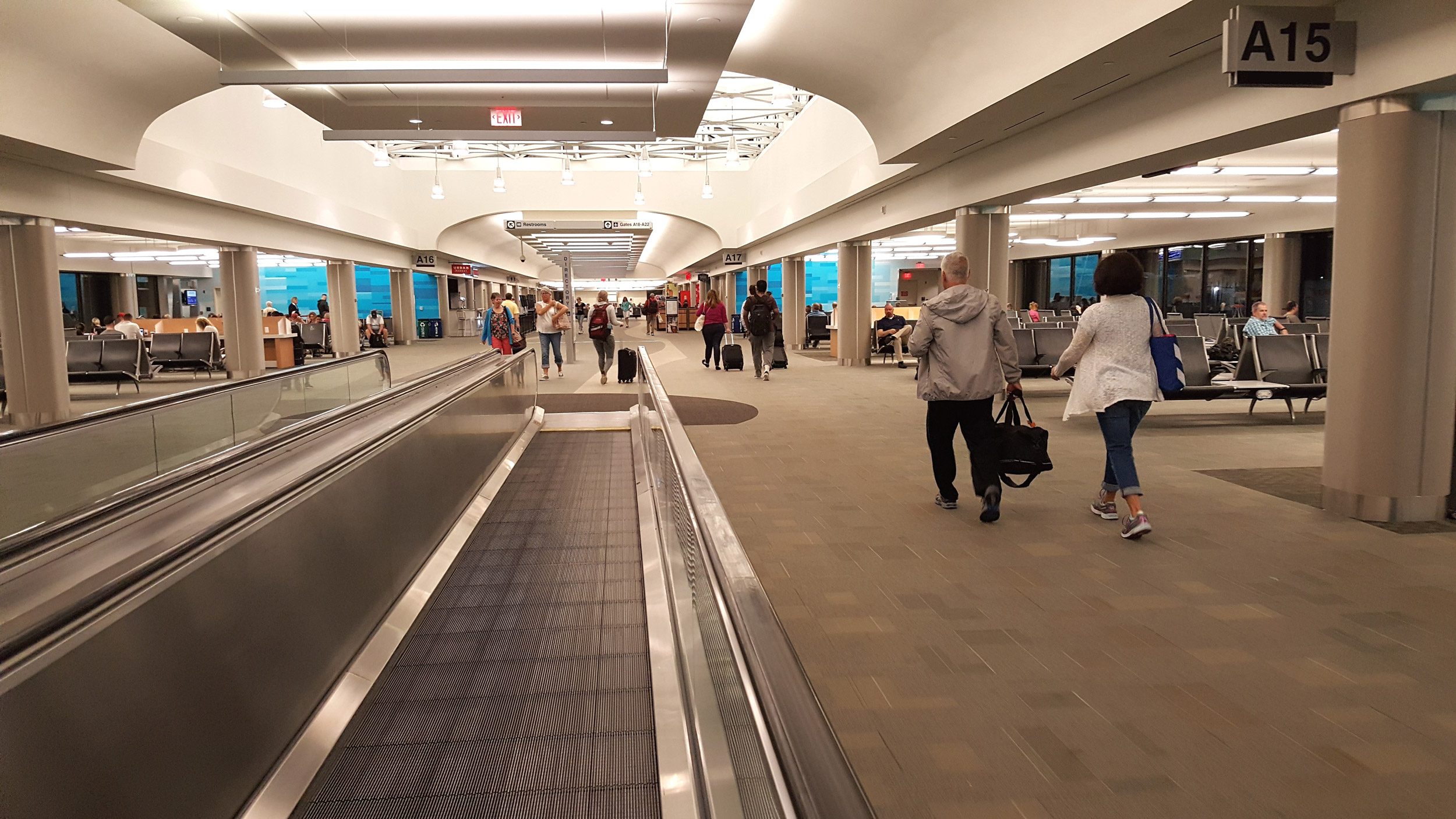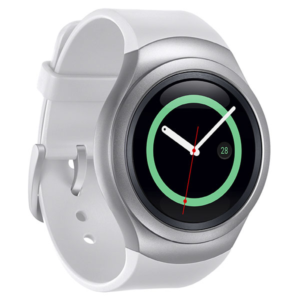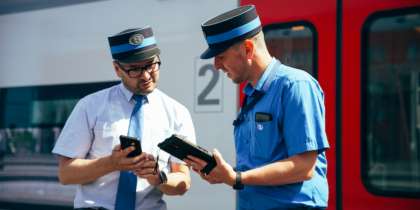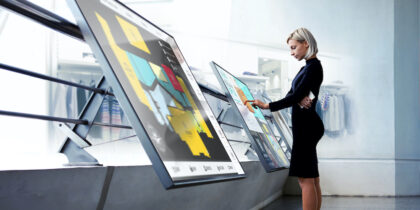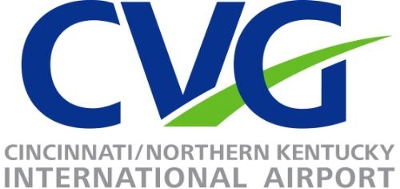
The Challenge
The Cincinnati/Northern Kentucky International Airport (CVG) sees around 160 passenger flights per day from commercial airlines and approximately 6.7 million passengers annually. Recent airline announcements are contributing to sizeable increases in commercial passenger traffic and intensifying the use of its facilities. CVG expects to see the number of passengers increase by as much as 25 percent in a short period of time. To ensure the customer experience remains positive, CVG needed a solution to gain real-time insight into airport passenger flow patterns, especially for its restroom facilities in non-ticketed, public areas such as the baggage claim and arrival terminals. The desired solution would support housekeeping staff efforts to stay ahead of cleanliness targets and improve the overall customer experience.
Samsung Solution
Working with Hipaax, an enterprise platform for task management on smartwatches and mobile devices, CVG implemented sensors in four baggage claim and arrival area restrooms. They then coupled these sensors with the use of Hipaax’ task management software running on smartwatches with an enterprise mobility management (EMM) solution to allow IT to remotely manage the devices and set appropriate use policies. When restroom usage numbers reach 150, the smartwatches alert housekeeping staff that it is time to inspect and attend to them. The solution leverages the industry’s first EMM to support smartwatches, and allows CVG to arm frontline personnel with immediate customer restroom usage and quality perceptions while making it easy for IT to manage the smartwatches on the backend.
Number of passengers could increase by
25%
The Results
CVG gained real-time insight into facility usage based on the data generated from the staff’s smartwatches — improving the cleanliness of the airport facilities and the overall customer experience. For example, CVG discovered that there were 4,000 restroom users per day across the four restrooms that were piloted, and that the busiest terminal was the men’s arrival terminal. Additionally, it can now track how long it takes to clean restrooms and is considering using this data to motivate staff’s performance through gamification techniques. Other applications CVG foresees in the future for smartwatches include airport security, work-order tracking, maintenance callouts and preventative maintenance.
“At Hipaax, we’re constantly thinking about innovative ways to provide the most value to our customers. CVG is a leader among major U.S. airports to identify and deploy innovative technologies to deliver the best experience for passengers.”
– Bharat Saini, Chief Technology Officer, Hipaax

With its first commercial airline flight taking off in 1947, Cincinnati Airport (CVG) is the busiest airport in Kentucky and the greater Cincinnati area. Throughout its history, CVG has seen an ebb and flow of passenger traffic. The recession beginning in 2008 led to a nationwide decline in airline traffic, but CVG is once again growing, with bustling traffic and a non-stop flow of passengers. It has seen significant expansion and diversification on its list of passenger airlines, is becoming the fastest-growing cargo airport in North America, and has recently announced it will be the first hub for Amazon Prime Air. By 2020, CVG predicts it will serve 9 million passengers annually.
CVG recently secured top awards after being voted the World’s Best Airport Serving 5 – 10 Million Passengers and the Best Regional Airport in North America for the sixth time by air travelers in the World Airport Awards. The World Airport Awards are the most prestigious accolades for the airport industry, voted by customers in the largest, annual global airport customer satisfaction survey. The Skytrax World Airport Survey is widely regarded as the quality benchmark for the world airport industry, assessing customer service and facilities across 550 airports. The survey and awards are independent of any airport control or input and are therefore an impartial benchmark of airport excellence and quality.
The Customer Need
Airport Traffic Growth Impacting Airport Maintenance Operations
With the announcements coming along with an increase in flights from its existing passenger airlines and the addition of new commercial airline brands, CVG’s airport traffic is increasing rapidly.
“Translating to passenger volume, it means an estimated 5,000 more passengers,” notes Brian Cobb, vice president of customer services at CVG. “We’re anticipating an increase of 25 percent within a very short period of time, placing additional volume-based demands on our stellar staff.”
Historically, housekeeping staff has worked on a cleaning routine based on the flight scheduling — cleaning after flight landing and takeoff times. This approach to restroom maintenance worked well pre-recession, when 80 percent of CVG’s airline passengers were connecting from one plane to another, making passenger flows relatively predictable. Today, however, 90 percent of CVG’s traffic is from the local market and only 10 percent are connecting passengers. This has changed the dynamic and made it more difficult to predict and schedule around peak times for restroom usage.
“We can pretty much tell you how many passengers will use particular restrooms on the secure side of the airport, where passengers are required to process through security with a boarding pass” says Cobb. “The variable is in the terminal building because it’s a public use space open to all, and you don’t need to have a ticket in order to enter the terminal or use the restroom.”
Operationally, this has been a critical issue. “Airport cleanliness is a key driver to overall customer experience. If you see poor cleanliness conditions, immediately you formulate an opinion, and that’s not the perception we want to be known for,” says Cobb.
To improve the situation, CVG turned to technology to help increase efficiency, match staff to peak restroom usage times and understand if staffing levels are appropriate for the passenger flow.
The Solution:
Real-time Passenger Traffic Alerts Help Improve Restroom Cleanliness
As CVG looked for a technology solution that would fit their needs, they knew it was imperative that any solution must meet three key criteria:
- Serve the true customer — the end user who is traveling through the airport.
- Provide efficiency for the internal customer — its personnel committed to enhanced airport cleanliness and experience.
- Use innovative technology to boost the overall experience for all parties.
To meet the above criteria, Cobb and his team worked with Bharat Saini, chief technology officer of Hipaax, to deploy TaskWatch based wearable workflow solution for facilities management using Samsung smartwatches.
“At Hipaax, we’re constantly thinking about innovative ways to provide the most value to our customers,” says Saini. “CVG is a leader among major U.S. airports to identify and deploy innovative technologies to deliver the best experience for passengers. With TaskWatch, we are proud to have delivered a solution for automating service requests in real-time.”
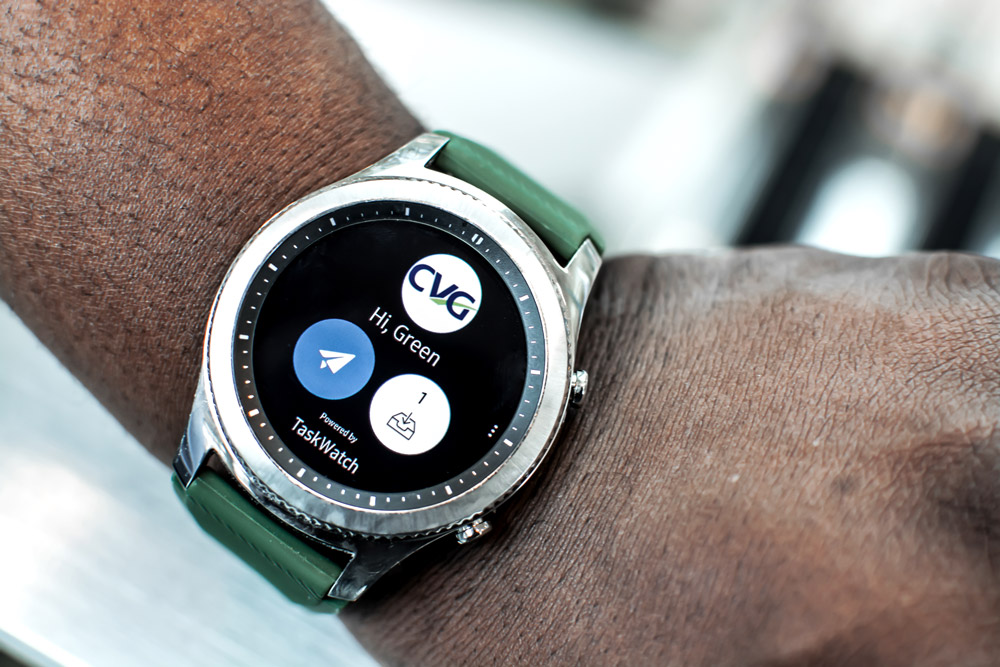
With the wearable solution, staff are able to gain the valuable insight they need to do their jobs better and improve the overall customer experience.
“When someone walks in, the sensor counts them as a half, and then when someone walks out, another half,” says Stephen Saunders, senior manager of terminal operations at CVG. “We set the threshold at 150 people going in and out, and then a notification was sent to a housekeeper who was working in the area via the smartwatch to notify them that the restroom needed servicing.”
To ease IT management concerns, these smartwatches were equipped with the Samsung SDS EMM solution that allowed IT to better manage and secure the smartwatches, including the ability to deploy applications rapidly through remote uploading, protect data through remote wiping capabilities if a device is lost or stolen, and set policies regarding what applications end users can access to improve productivity and optimize the smartwatches’ battery life.
In addition to easy device management, the ability for housekeeping staff to adjust to changes in real-time proved to be one of the biggest benefits. In the past, as the aircraft scheduling would roll out, CVG managers would work with housekeeping staff to set schedules based on anticipated traffic. However, the airport environment is very dynamic.
“If we run into a severe weather day and flights are delayed, what was historically scheduled no longer applied,” says Cobb. “Does it make sense that the staff continues to do what they’ve always done? Or do they adjust to the new plan based on the estimated schedule, or better yet, what’s happening in real time? And that’s where the smartwatch gives us the advantage of a real-time look, allowing us to meet our own expectation of how clean the restrooms should be before the next wave of customers arrives.”
The Technology:
Samsung Wearable Tech
Samsung Gear S2
Designed for mobile productivity, The Gear S2 gives you access to important notifications at a glance.
Samsung Gear S3
Premium, easy to use and manage wearable, built to last through the demands of work and life.
The Result:
Better Data and Insights Improve Customer Experience
For CVG, the results of their project with Samsung smartwatches has been highly positive. “It gives you a tremendous wealth of information, right at your fingertips, that we didn’t have in the past,” says Cobb.
For instance, through the program, CVG discovered there were over 4,000 visits per day across the four restrooms in the pilot. They also discovered that, despite their assumption that the women’s departure terminal facility was the busiest, data showed that the men’s arrival terminal was actually the busiest. Finally, the ability to remotely manage the smartwatches and restrict device use to only Hipaax’ task management software, enabled IT to better manage and deploy the solution to housekeeping staff without impacting their own productivity.
CVG managers are now looking at how to use the smartwatches to gain additional productivity data and set service level expectations, such as:
- How long does it take an employee to respond to an alert?
- How long does it take that individual to clean the facility?
- How long until another alert is triggered?
Knowing this type of information will help support the need for additional staffing with tangible data. It could also lead to enhanced employee performance through gamification and incentives, such as giving employees points for being the first to respond to a cleaning alert in the area, or for cleaning the facility within an allotted amount of time, and then rewarding employees based on who gets the most points each month.
CVG also recognizes the ability for smartwatches to minimize noisy, traditional radio communication to provide a quieter environment for travelers and potentially offer an added security feature. “Our housekeepers are one of our first lines of defense toward security,” says Cobb. “They’re trained to always look for security implications and potential concerns, so imagine an environment where they can quietly alert authorities.” When compared to a smartphone or tablet, wearables provide a more discreet method of communication for staff to interact with each other about potential security concerns.
The sky is the limit. From using smartwatches to create work orders, maintenance callouts or preventative maintenance, to elevating the airport experience, CVG managers are looking at a wealth of future possibilities for wearables.
